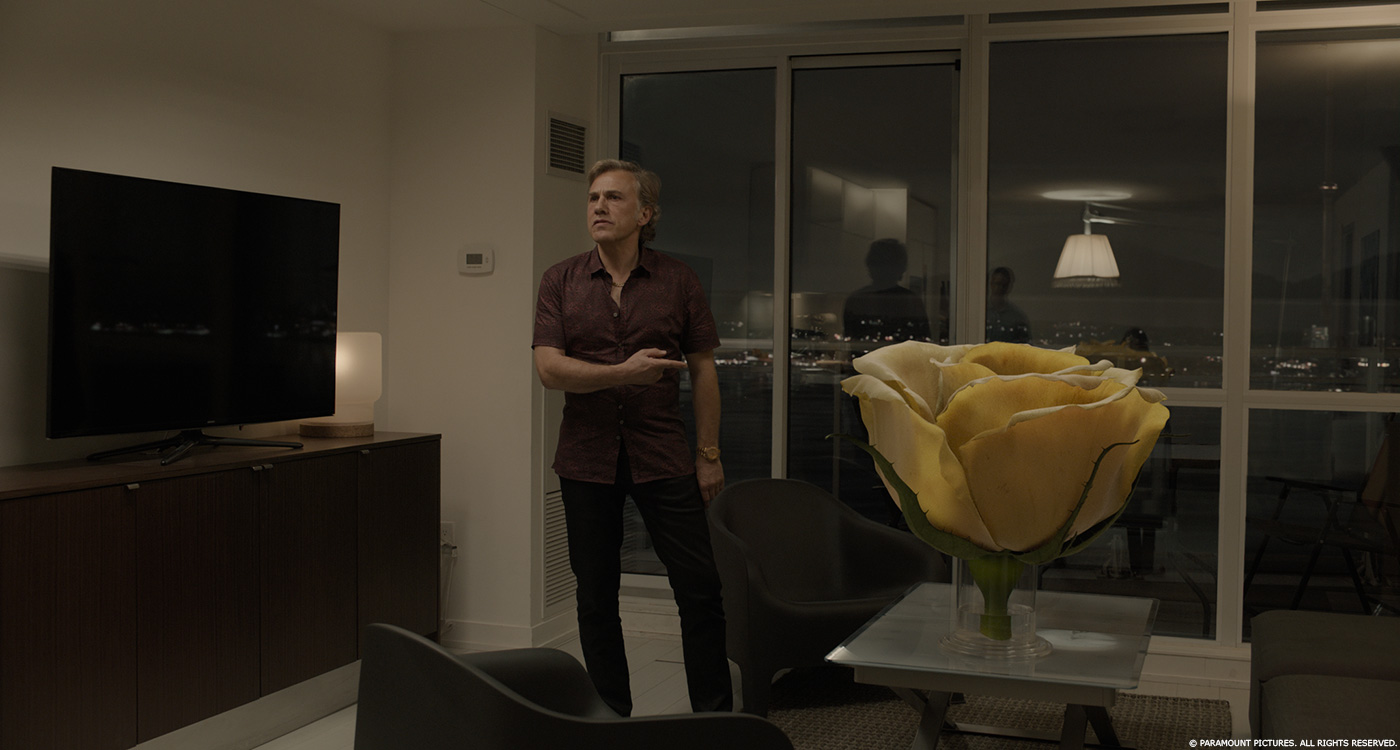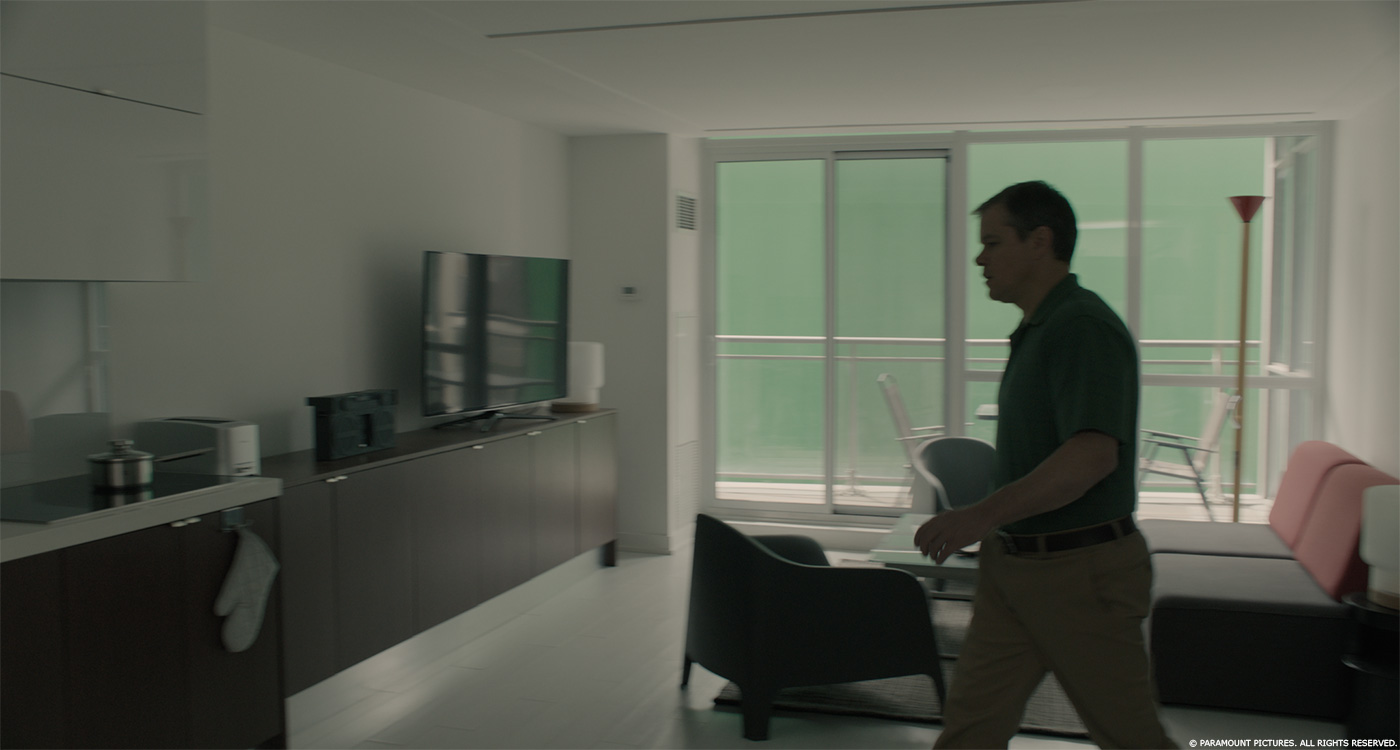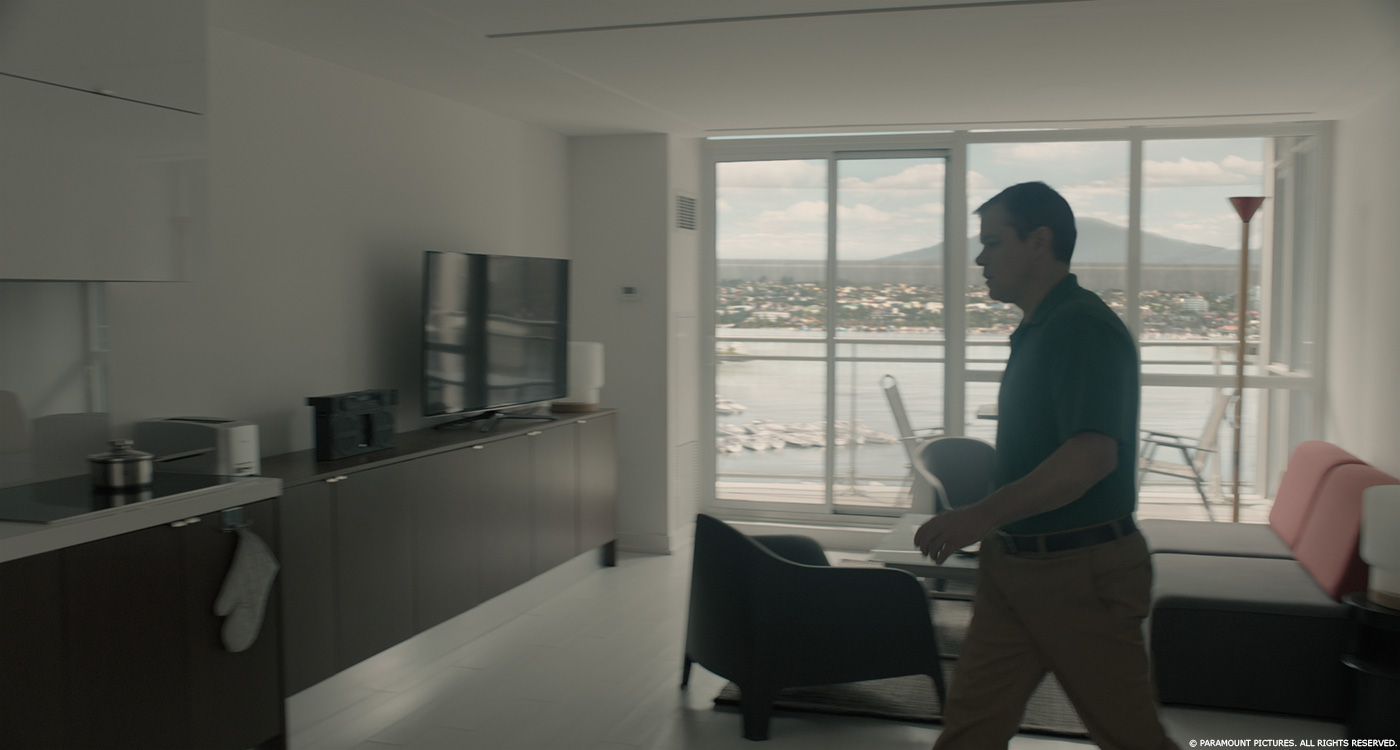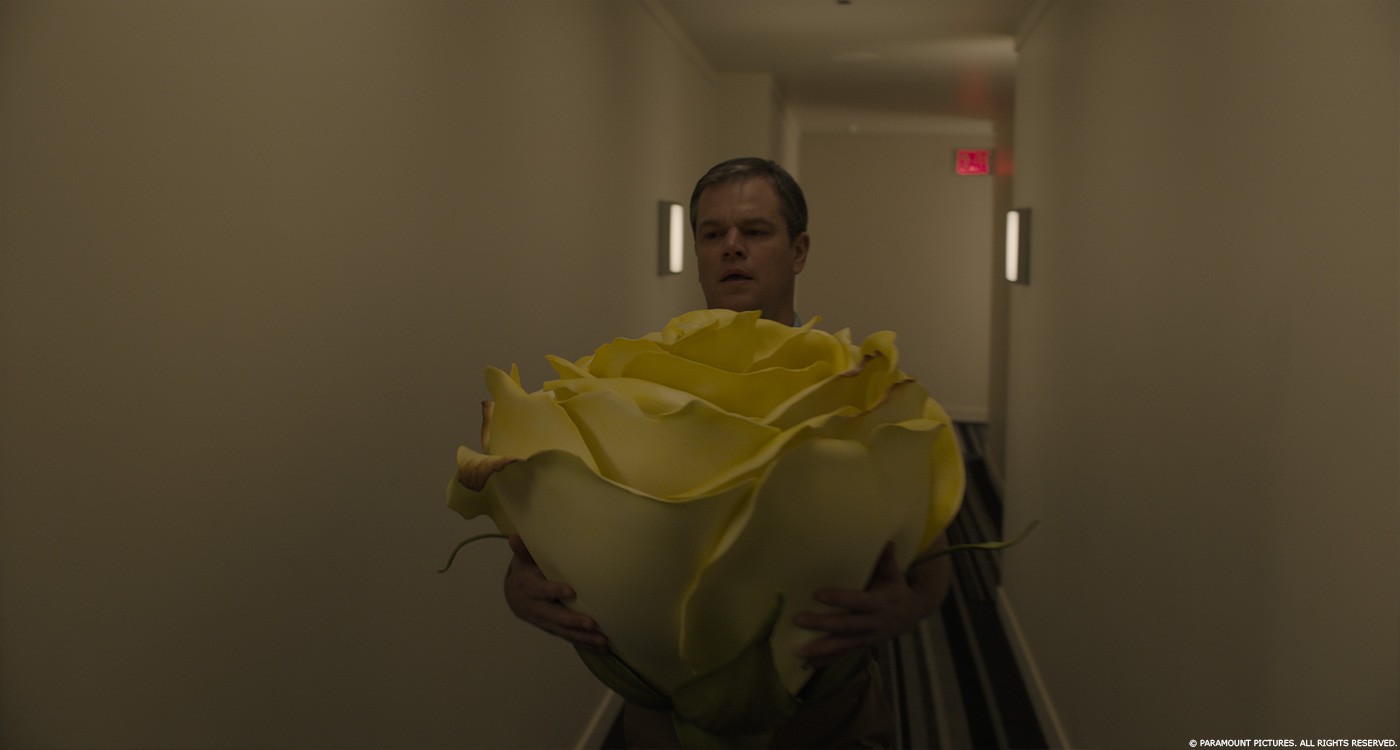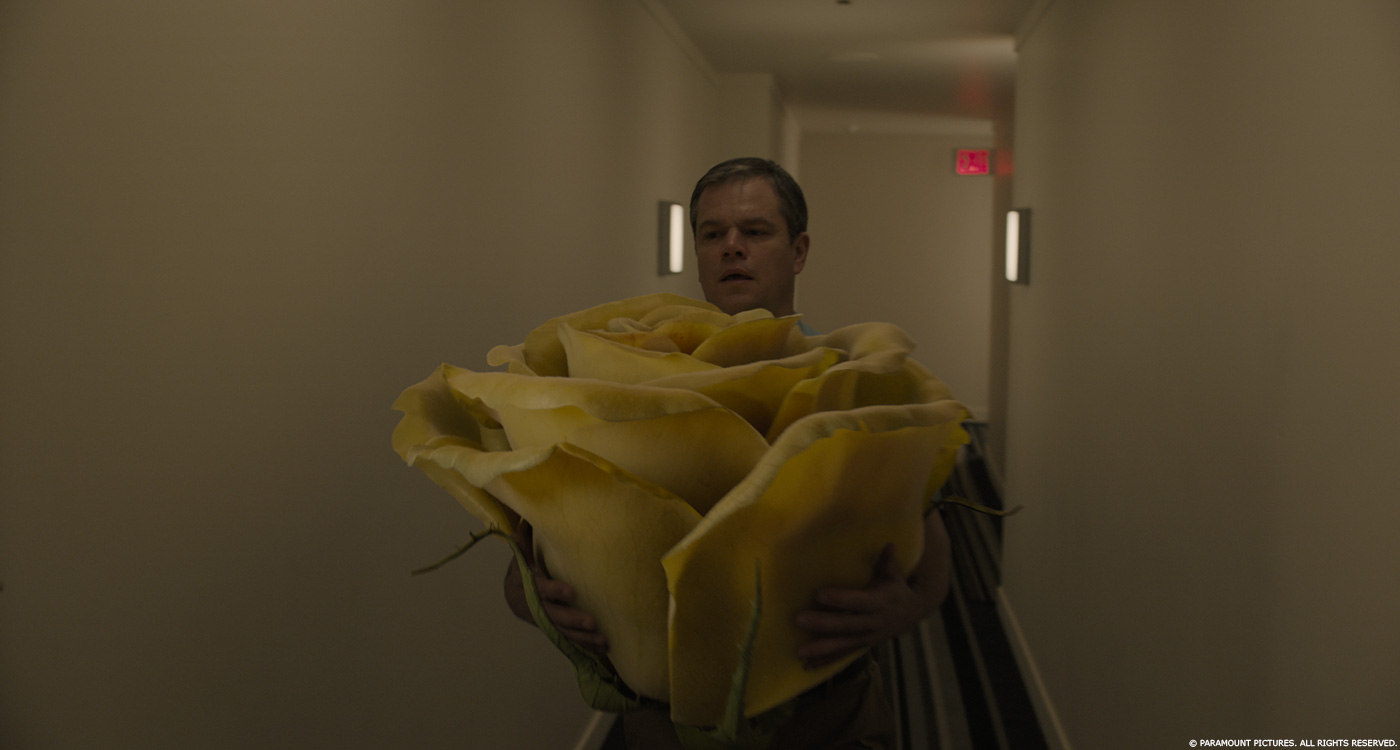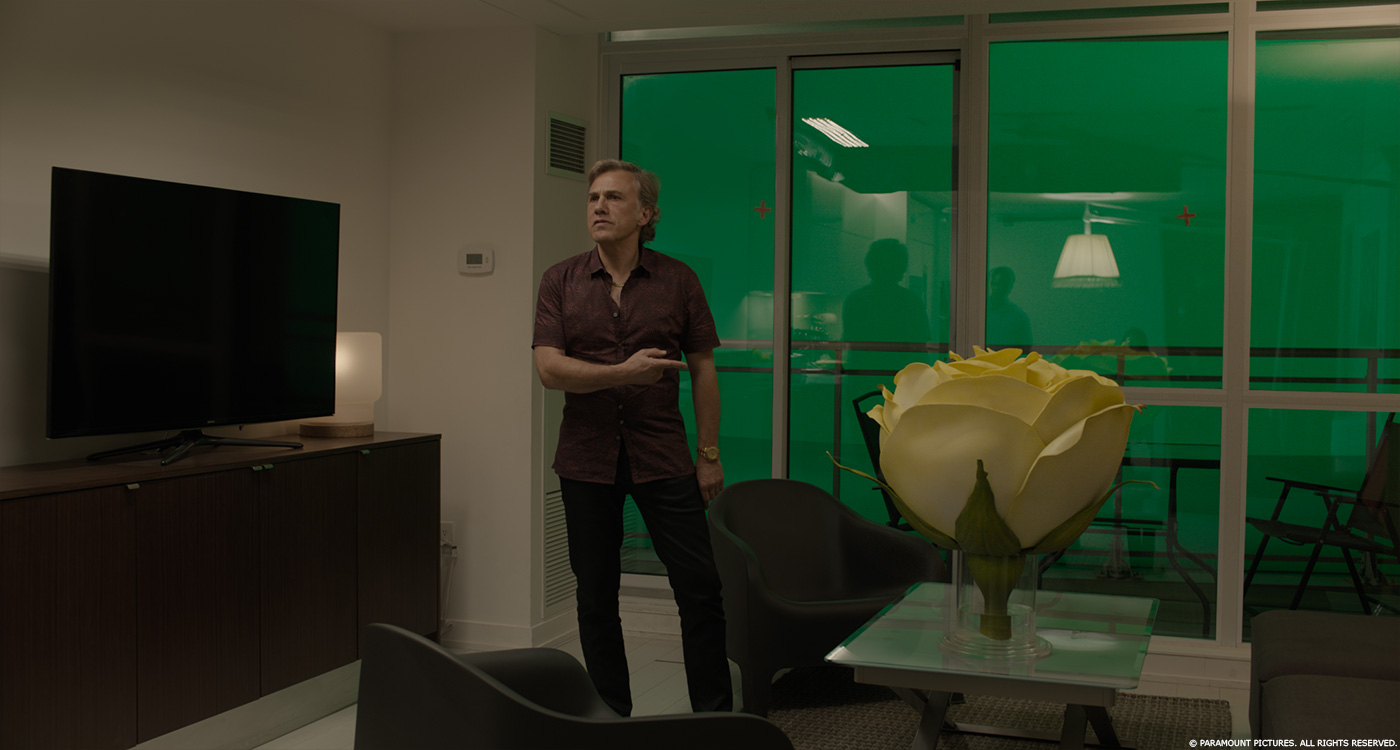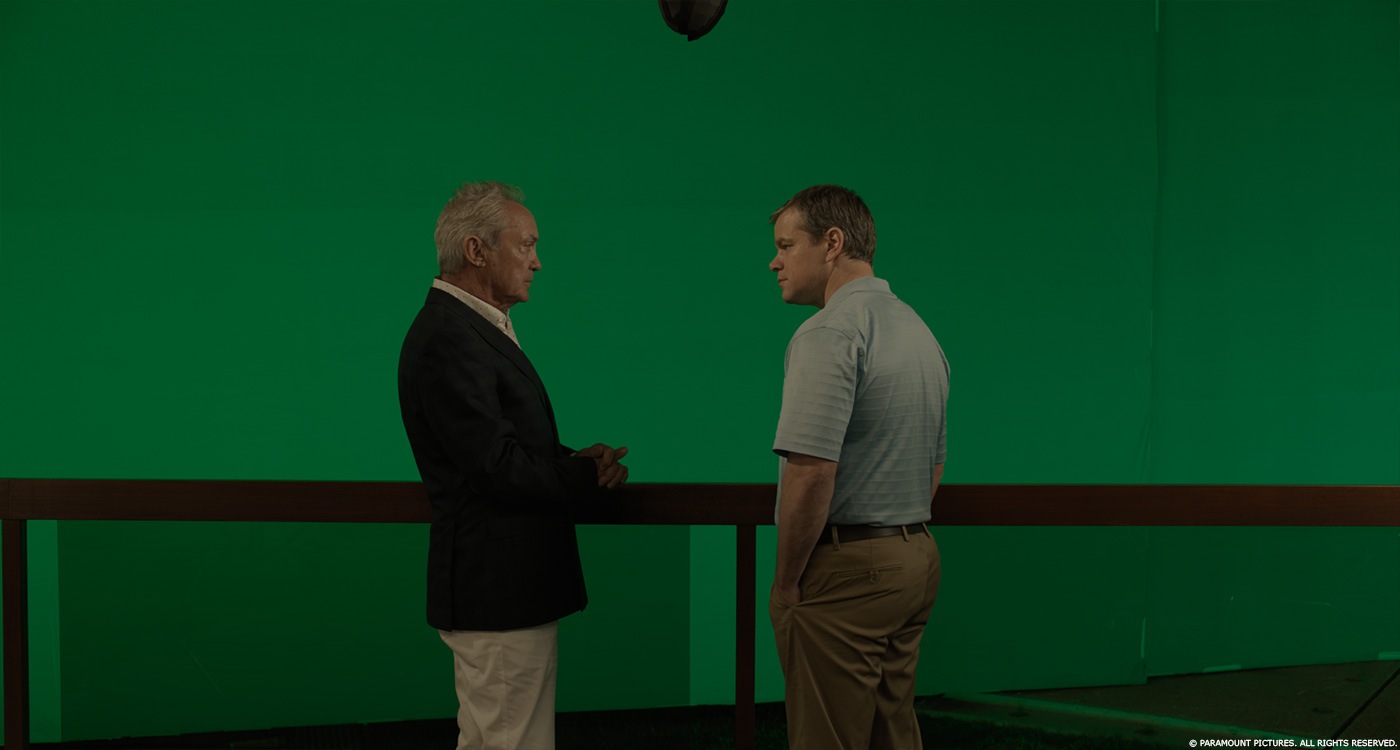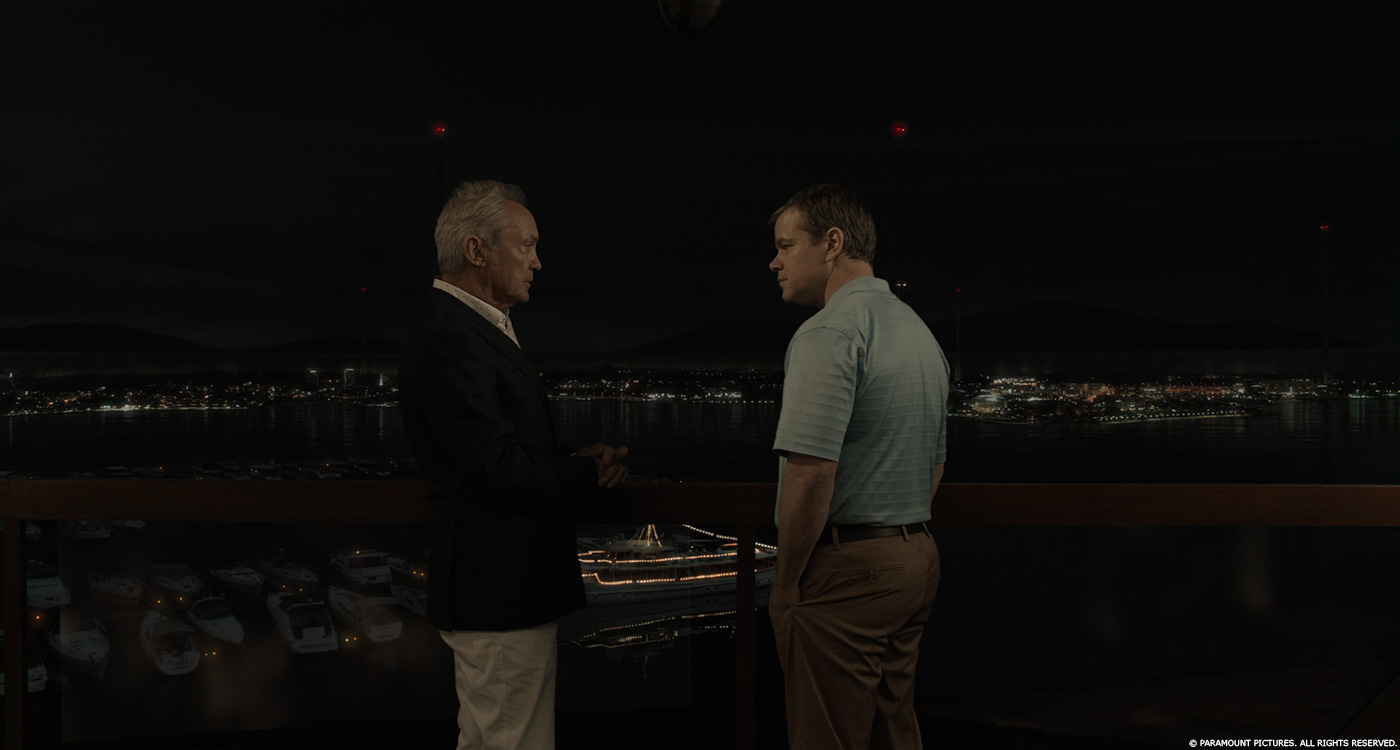A few weeks ago, Stephane Nazé explained to us in detail about the work of Framestore on DARKEST HOUR. He talks to us today about his work on DOWNSIZING.
How did you and Framestore get involved on this show?
Framestore became involved after the shoot, in September 2016
How was the new collaboration with director Alexander Payne and VFX Supervisor James E. Price?
I had the chance to meet Alexander Payne and Jamie in LA at the beginning of 2017. It was a short visit but good enough to get the vibe of the show and to understand their expectations. Jamie was my main contact when working on the show.
What was their approaches about the visual effects?
They were clear from the very beginning that the effects had to be ‘transparent’, and be there more to support the story but be secondary in importance to the acting. They also wanted the difference in scale to be obvious but not distracting. Therefore it was all about adjustments and compromising, for example when looking at the scale of the water we had to feel the change of scale but not to have the boats moving crazily on waves because they were supposed to be miniature.
What are the sequences made at Framestore?
Framestore was in charge of the sequences based in Dusan’s apartment and Paul’s apartment.
Can you explain in details about the creation of the CG rose?
First, we made a selection of real roses, visited different florists (this is not a joke), then we sent some photos to Jamie and he picked one. We set up a photo shoot for the selected rose and scanned the petals to capture the intricate detail. For the shape, we had to adapt the overall shape to match with the prop from the shoot. The plan was to keep the contact of Paul`s hands and the prop.
Can you tell us more about its shaders and textures?
The goal was to catch the maximum of iridescence, therefore it is something we boosted and it is something we cheated, putting much more light shining from the back for example. Texture-wise, initially we took some high res photos of the petals but the result was not convincing, therefore we tried to scan the petals and we got a much better result. The difficulty was more in the adjustments, the goal was not to get a rose that was monochromatic or dirty, so we had to find the good level of colour and imperfection. It meant a lot of back and forth between textures and lighting.
How did you handle the lighting of the rose?
We had to « art direct » almost all the shots in lighting. Of course we got very useful HDRI files, as a base, but had to cheat a lot to get a successful result. In most of the cases the result was « accurate » but was not giving what we were expecting to get. The rose had to be good looking, the unconscious idea of the perfect rose.
What kind of gear was wearing Matt Damon at the place of the CG rose?
Matt Damon was holding a big fake yellow rose which was the same size of the CG one. The gear was not to bad in term of shape or colours, the problem was more about how it was reacting with the light.
The apartment of Dusan is a beautiful place. How did you created the views of the Marina?
We got some plates from the client, shot in Toronto. We did a stitch to cover the panorama from Dusan`s apartment. We built the boats in CG for the water interaction, water was CG because we had to change the scale of it, for the purpose of the story. The very far city is a DMP based on the asset we got from ILM.
How did you populated the Marina with people and various activities?
Most of the life in the Marina is 2D. Vehicles and boats are sprites. Most of our shots was night time, therefore it helped to find comp solutions.
Does the miniature size of the environment affects your work?
Not really!
How did you manage the challenge of the nighttime lighting?
The 2.5 DMP approach was based on geometry, therefore we rendered a cyclo day time and another one that was during the night, then we worked on 2 big DMPs.
Can you tell us more about the water simulations?
We did a lot of tests to define the good scale of the water. The scale of the water was real but the boats and the city were supposed to be miniature. The difficulty was to find the correct adjustment between the movement and the frequency of the water, so that we didn’t break the balance between those 2 worlds; the human one and the miniature one.
Did you share assets with the other vendors?
ILM shared « Leisureland » with us.
What was the main challenge on this show and how did you achieve it?
The main challenge was to manage the length of the shots; an average of 400 frames per shot, which is huge! Also, because it was all about the performance of the acting, we also had to work with the changes from takes as well. In the end I think we did all the shots twice! But the client was been honest from the very beginning; Jamie told us that « this film is all about performance, Alexandre lives his film and it will evolve throughout the whole of post-production »
What is your best memory on this show?
Our collaboration with the client. The post on a film is a big adventure, with sometimes a lot of pressure, but Jamie was very supportive and the work was been very collaborative.
How long have you worked on this show?
Almost 11 months.
What’s the VFX shots count?
110 shots.
What was the size of your team?
40.
What is your next project?
I’m working on the DEADPOOL sequel
A big thanks for your time.
// WANT TO KNOW MORE?
Framestore: Dedicated page about DOWNSIZING on Framestore website.
© Vincent Frei – The Art of VFX – 2018

